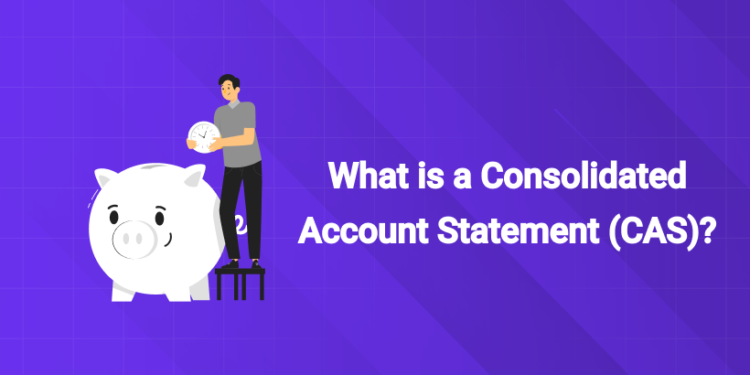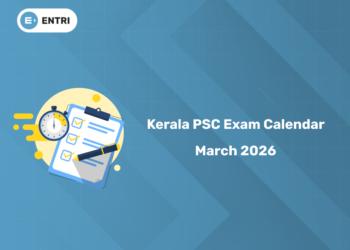Table of Contents
Introduction
Have you invested in multiple mutual funds, demat accounts, and across asset managers? How nice it would have been if there was an option to view all your investments in a single place. Here’s the good news the Consolidated Account Statement (CAS) brings clarity by combining these fragmented investments into one unified document. In this article you’ll learn exactly what a CAS is, why it matters, what it contains, how to get one, and how to use it to your advantage.
What is a Consolidated Account Statement (CAS)
A Consolidated Account Statement (CAS) is a single summary document that captures all your investment transactions and holdings across various mutual fund houses and depository accounts under your permanent account number (PAN). In simpler terms, rather than logging into several fund-house portals or checking multiple statements, the CAS is your one-stop snapshot of your portfolio for a given period.
The term “CAS” comes up frequently in India’s mutual fund and securities market context, where regulators (for example, the depositories) mandate its generation and distribution.
Learn Stock Marketing with a Share Trading Expert! Explore Here!
Why CAS matters: Key benefits
Here we take you through some of the primary reasons why having a Consolidated Account Statement (CAS) is useful:
- Consolidated view of investments: You can see all your holdings (mutual funds, demat holdings etc.) in a single window instead of multiple statements from different entities.
- Ease of portfolio tracking: With the CAS, it’s quite easy to check your investment value, transactions and changes, which helps in investor vigilance and monitoring.
- Helps in tax filing and compliance: Since CAS provides transaction history (purchases, redemptions, dividends) and holdings, it comes handy while doing income-tax return preparation or audit.
- Better financial planning: By viewing your full portfolio, you can check asset allocation, identify poor-performing schemes or duplicates, and make adjustments accordingly.
- More transparency and error detection: With a single statement that consolidates all your investment activity, you are more likely to find out errors, missing transactions, or hidden charges.
What information does CAS include?
Here you go. The information that you typically find in a Consolidated Account Statement (CAS) are:
- Investor/holder information: Name, PAN, address, mode of holding, KYC status.
- Folio/account numbers: The unique identifiers for your mutual fund holdings or demat accounts.
- Scheme details: The number of units, current NAV, value of holding, date of investment of each mutual fund scheme you hold.
- Transaction history: Purchases, redemptions (including maturity payments), systematic investment plan (SIP) entries, switches, dividend payouts, bonus units, mergers of schemes.
- Holdings in dematerialised (demat) form: For investors who have a demat account, the CAS may also show holdings of equities, preference shares, bonds, etc.
- Summary and portfolio values: Opening balance, closing balance for the period, total investment value across accounts for that period.
It is important to note that non-financial transactions such as change of address, bank account, nomination details, etc., typically do not get included in the monthly CAS if there has been no actual investment transaction for the period.
How CAS is issued and when you receive it
Understanding the issuance schedule and criteria helps you know when to expect your CAS:
- The CAS is generated by depositories (such as National Securities Depository Limited (NSDL) or Central Depository Services (India) Limited (CDSL)) when there are financial transactions in a given month under a PAN.
- If there has been no financial transaction in any of your mutual fund folios or demat accounts for a half-year period ending March or September, then the CAS is sent once in six months (in April and October) showing holdings as of the previous month.
- Typically, for months with transactions, the CAS is distributed by the 10th day of the following month.
Thus, for an investor, if you buy or redeem units in April, you will receive the CAS for April around 10th May. If you have no activity in May-June, you may only receive the half-yearly CAS covering ending June/Sept.
How to access or download your CAS
Getting hold of your Consolidated Account Statement (CAS) is relatively straightforward. Here are the common ways:
- Via Depository portals:
- On the CDSL website: Go to the CAS section, enter your PAN, demat account number, date of birth, verify OTP, then you can download the CAS.
- Similarly NSDL offers a CAS page for its account-holders.
- Via Registrar & Transfer Agents (RTAs) for mutual funds: Some RTAs (like CAMS or KFintech) provide “Mail-back” CAS service. You can register your email and have the consolidated statement sent directly.
- Email / physical copy: If you have registered your email and opted in, you can receive a PDF via email. Some investors also request offline delivery from the fund house or RTA.
- Mobile apps / dashboards: Several fintech or mutual-fund platforms lets you view/download your CAS from their interface once you are logged in.
Tips for easier access:
- Make sure that your PAN is updated and the same across all holdings (mutual funds + demat).
- Ensure your email and mobile number are updated in KYC.
- Keep a copy of the downloaded PDF for your records (for tax and audit purposes).
Limitations and things to keep in mind
While the Consolidated Account Statement (CAS) is a powerful tool, it isn’t perfect. Here are some caveats and limitations:
- Time-lag in reflection of data: There may be a delay in showing the transactions; the NAV/market value may not be real-time.
- Partial view of holdings: If you have investments outside the depositories or under a different PAN, that may not get included. For example, if mutual funds are held in non-demat mode and not linked to PAN-RTA jointly.
- Omission of dormant folios: If a folio has no transaction for long, it may not reflect in monthly CAS; instead appears in a half-year statement.
- Errors and omissions: KYC mismatches, missing PAN across holdings, or incorrect details may cause incomplete consolidation of your portfolios.
- Not a replacement for detailed statements: CAS gives a consolidated summary; for in-depth details (fund-house level, scheme-level performance) you may have to rely upon individual statements or dashboards.
Having an understanding of these limitations helps you interpret the CAS correctly and not rely on it as the only source of truth without cross-verification.
How investors can make best use of their CAS
To get full value from your Consolidated Account Statement (CAS), you should treat it not just as a passive PDF but as a decision-making tool. Here are some useful tips:
- Review the statement monthly or quarterly: Check whether there are any unexpected transactions, new folios you forgot about, or missing investments.
- Check holdings and value: See how each investment has grown, what is the current market value, number of units, etc.
- Analyse asset allocation: Use CAS to check your portfolio distribution — across equity, debt, mutual funds, demat holdings. If it is not in alignment with your target, rebalance.
- Evaluate transactions: Go through your purchases/redemptions/switches. Ask: Are you switching funds too often? Are new funds adding value?
- Use for tax planning: CAS is handy for assembling transaction history needed for capital gains, dividend income, etc. It may save you effort at tax-filing time.
- Detecting errors or fraud: If you see transactions you don’t recognise, contact your fund house / RTA / depository. CAS can help you spot dormant or ghost folios.
- Plan for financial goals: Use CAS data to check if your investments are in alignment with your goals such as retirement, home purchase, education etc. It gives you the baseline.
- Keep archived copies: Save your monthly or half-yearly CAS PDFs. They serve as your portfolio history over time, a good reference for a performance review.
By integrating CAS into your investment routine, you’ll move from passive record-keeping to active portfolio oversight.
Learn Stock Marketing with a Share Trading Expert! Explore Here!
Key Takeaways
- CAS stands for Consolidated Account Statement and is a one-stop statement capturing your investments across mutual funds and demat holdings under one PAN.
- It provides a unified view of transactions, holdings, NAVs, and market values, making portfolio tracking simpler.
- You can download CAS via depository websites (NSDL/CDSL), RTAs (CAMS/KFintech) or receive it via email.
- While powerful, CAS has limitations, time-lag, incomplete holdings, and it doesn’t entirely replace individual fund statements.
- Use your CAS strategically to review performance, rebalance assets, detect errors, and support tax planning.
Regular review of your CAS makes you more informed and better equipped to manage your investments proactively.
Conclusion
The Consolidated Account Statement (CAS) offers a consolidated lens through which you can view all your mutual fund and demat investments under a single PAN. It makes tracking easy, improves transparency, supports tax and financial planning, and gives you control over your portfolio. Though not perfect, if used in the correct manner, a CAS becomes an important tool in your investment toolkit. Checking it regularly, interpreting it properly and acting on the insights it offers will help you stay financially organized and take measures proactively.
Stock Market Training Reviewed & Monitored by SEBI Registered RA
Trusted, concepts to help you grow with confidence. Enroll now and learn to start investing the right way.
Know moreFrequently Asked Questions
What exactly is a CAS?
A CAS (Consolidated Account Statement) is a document issued under your PAN that consolidates all your mutual fund transactions and holdings (and in some cases depository or demat holdings) in one statement.
How often do I receive my CAS?
If you have at least one financial transaction (purchase, redemption, switch, dividend etc.) in a month, you’ll receive a CAS for that month (typically by the 10th of the next month). If there are no transactions for six months, you get a half-yearly CAS.
Does CAS include holdings from all my demat accounts and fund houses?
Yes, if your holdings are linked to the same PAN and are serviced via the depository system or RTAs. However, if a folio uses a different PAN, or if KYC details are not uniform, some holdings may be omitted.
Can I download my CAS anytime?
Yes, you can download it from the depository’s website (like CDSL or NSDL) by entering PAN, demat account number, date of birth, OTP etc.
Does CAS cover only mutual funds?
Not only. It primarily covers mutual fund transactions and holdings, and in the case of depository accounts it may include equities, bonds, preference shares, and other demat holdings.
Is CAS free of cost?
Yes. In most cases, the statement is provided free of cost by the depositories or RTAs.
What should I do if I spot an error or missing investment in my CAS?
If you notice missing investments, incorrect details or unknown transactions in your CAS, you should contact the Registrar & Transfer Agent (RTA) of the concerned fund house, or the depository (NSDL/CDSL) with details like folio number, PAN, transaction date etc., for rectification.














